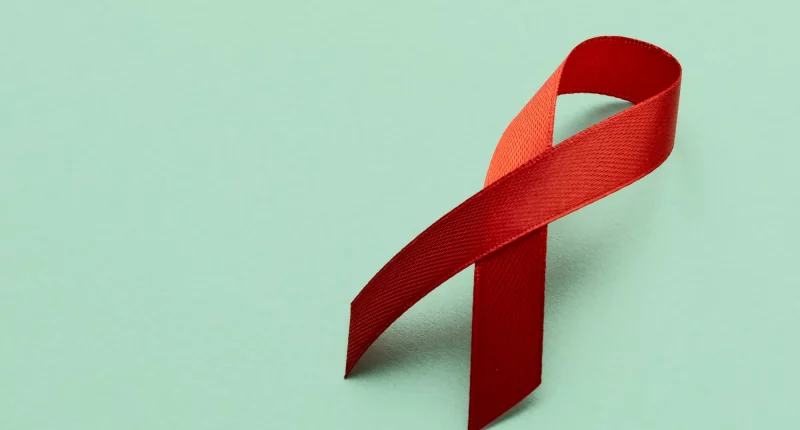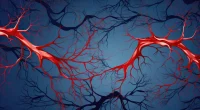Acute lymphoblastic leukemia, or ALL is a kind of blood cancer. It affects people of all ages both younger ones and adults.
As stated by the American Cancer Society (ACS), ALL is most commonly found in children below 5 years old. The risk of getting ALL decreases as children grow older, but it starts to increase again once people reach their age 20s and continues to rise after age 50. Around 60% of ALL cases are diagnosed in children.
In 2022, the ACS estimates that about 6,660 individuals will be diagnosed with ALL, and approximately 1,560 individuals will die from it. Adults with ALL have a higher chance of dying from the disease compared to children.
Symptoms
Leukemia occurs when the body secretes too much white blood cells, called blast cells. In acute lymphoblastic leukemia (ALL), the body makes an excess of lymphocytes or lymphoblasts, which turn into leukemia cells.
As these blast cells build up in the bone marrow and blood, they force out healthy cells needed for the body to function properly. When the number of platelets and red blood cells decreases, symptoms begin to show.
The symptoms usually start gradually but become more serious as the number of blast cells increases.
Possible symptoms of acute lymphoblastic leukemia (ALL) include extreme sweating and high temperature of a body, which may indicate the body’s response to the cancer. Fatigue and dizziness are also common, as the body’s energy levels are depleted. Easy injures or bleeding more often, such as bleeding from nose, can occur due to a decrease in healthy blood cells. Breathing difficulties and painful bones and joints may be experienced as the disease progresses.
Infections are another sign of ALL, as the immune system becomes compromised. Swelling of lymph glands, pale skin, and decreased appetite leading to weight loss are additional symptoms. Petechiae and Purpura, small spots or patches caused by bleeding under the skin, can also appear. It appears purple or red on light skin. It is tough to find on dark skin, but are often visible on some areas like inside the mouth and the palms of the hands.
As ALL advances, it can impact other organs. If it affects the spleen and liver, it may cause abdominal inflammation and discomfort.
If the disease spreads to the spinal cord and brain, the individual may experience weakness, headaches, and other symptoms.
Advancement
Leukemia can either be acute or chronic.
Chronic leukemia grows gradually over time. This type of leukemia makes the body to secrete more useful and mature cells, so it doesn’t immediately disrupt the body’s functions.
On the other hand, acute lymphoblastic leukemia (ALL) is a fast-growing type of leukemia. It develops quickly and forces out healthy cells. As the immature and useless blast cells build up in the blood and bone marrow, there is less room for healthy cells. This makes it difficult for the body to work properly because it doesn’t have enough good cells to do important jobs like fighting infections or carrying oxygen.
Causes and Risk Factors
Doctors aren’t completely sure why acute lymphoblastic leukemia (ALL) occurs, but they have identified several common risk factors.
ALL is more likely to occur in certain age groups: young children and adults around 50 years old are at higher risk. Genetic factors and certain conditions, like Down syndrome, Klinefelter syndrome, and Fanconi anemia, can also increase the risk of developing ALL.
Getting contact with the radiation is another risk factor. This can happen when a nuclear accident takes place or as a result of radiation therapy for a cancer. Similarly, exposure to certain chemicals, such as benzene found in cigarette smoke and also petroleum products, can raise the risk.
Certain viruses might also increase the risk of ALL. The Epstein-Barr virus (EBV) and the human T-cell leukemia virus are examples.
A study from 2018 suggested that living close to overhead electricity wires might slightly increase the chance of childhood leukemia, though the risk is small and not well understood.
Diagnosis
If someone shows symptoms that might indicate acute lymphoblastic leukemia (ALL), a healthcare provider will start by taking their medical history and doing a physical exam. Then, the healthcare provider will perform several tests to determine if ALL is present.
These tests can include:
- Blood tests: To check for abnormal levels of blood cells.
- Bone marrow tests: A sample of bone marrow is taken to look for leukemia cells.
- Genetic tests: To identify specific genetic changes in the leukemia cells.
- Lumbar puncture: A sample of the fluid around the spinal cord is taken to see if leukemia cells are present.
- Lymph gland biopsy: A sample from a lymph node is taken to check for cancer cells.
- Imaging tests: Such as X-rays or MRIs, to see if the cancer has spread to other parts of the body.
A biopsy is particularly important because it can confirm if cancer is present and identify the type of cancer. Imaging tests help to determine if the leukemia has spread beyond the blood and bone marrow to other areas.
Treatment
The treatment for acute lymphoblastic leukemia (ALL) relies on the type of ALL, the patient’s age, and their health history. There are various treatment options available.
Chemotherapy
Chemotherapy uses powerful medications to destroy cancer cells. While it is effective at targeting cancer cells, it can also damage healthy cells, leading to side effects. These side effects often go away after the treatment ends.
Radiation Therapy
Radiation therapy uses high-energy beams to target and destroy cancer cells in specific areas. Doctors might recommend radiation therapy if ALL has extend to the central nervous system, which includes the spinal cord and brain.
Stem Cell or Bone Marrow Transplant
A stem cell or bone marrow transplant can help support the recovery process during chemotherapy. Since chemotherapy can destroy bone marrow cells which are healthy along with cancer cells, a transplant can assist regenerate new, healthy cells. This boosts the body’s potential to recover from the intensive treatment.
Targeted Therapy
Targeted therapy is a newer treatment method that focuses on specific genes, proteins, or other elements that help growth of cancer. By blocking these specific targets, targeted therapy can slow down or stop the growth of cancer. Since this treatment is aimed at particular factors, it usually has some adverse reactions than chemotherapy. However, some side effects can still occur.
Immunotherapy
Immunotherapy is another innovative treatment. It works by boosting the body’s immune system to help it fight cancer more effectively. This therapy aims to strengthen the immune response against cancer cells.
Treatment for Children
The main treatment for children affected with ALL is chemotherapy. The initial phase of treatment is very intense, and children often need to stay in the hospital during this time. Fortunately, over 95% of children with acute lymphoblastic leukemia (ALL) achieve remission after one month of primary treatment.
According to the Dana-Farber Cancer Institute, about 15-20% of children who achieve lessening may face a recurrence later. However, the overall cure rate for children with ALL is above 90%, meaning that most children can be successfully treated and go on to live healthy lives.
Is ALL Curable with Treatment?
Acute lymphoblastic leukemia (ALL) can be very serious, and at the same time extremly treatable, mainly in children. The goal of treatment is to attain remission, which means that tests show no signs of leukemia.
In many cases, treatment can completely eliminate ALL, and the cancer does not recurred. This is often referred to as a cure.
However, in some cases, ALL might not go away completely. Individuals may live for many years with chronic ALL, meaning the cancer is still present but under control. These individuals will need regular medical check-ups and tests. If the leukemia starts to come back, they might need additional treatment.
Summary
Acute lymphoblastic leukemia (ALL) is a type of cancer that affects the bone marrow and blood. It’s quite common among children, but thankfully, the 5-year survival chances for kids is almost close to 90%. However, ALL can be more dangerous for adults. Yet, with treatment, some adults can live for many years with this chronic leukemia.
Treatment options for ALL include radiation therapy, chemotherapy, and targeted therapy. After treatment, some people achieve complete remission, meaning the cancer disappears and doesn’t come back. However, others may continue living with ALL. These people will require regular check-ups to ensure their condition stays stable over time.









